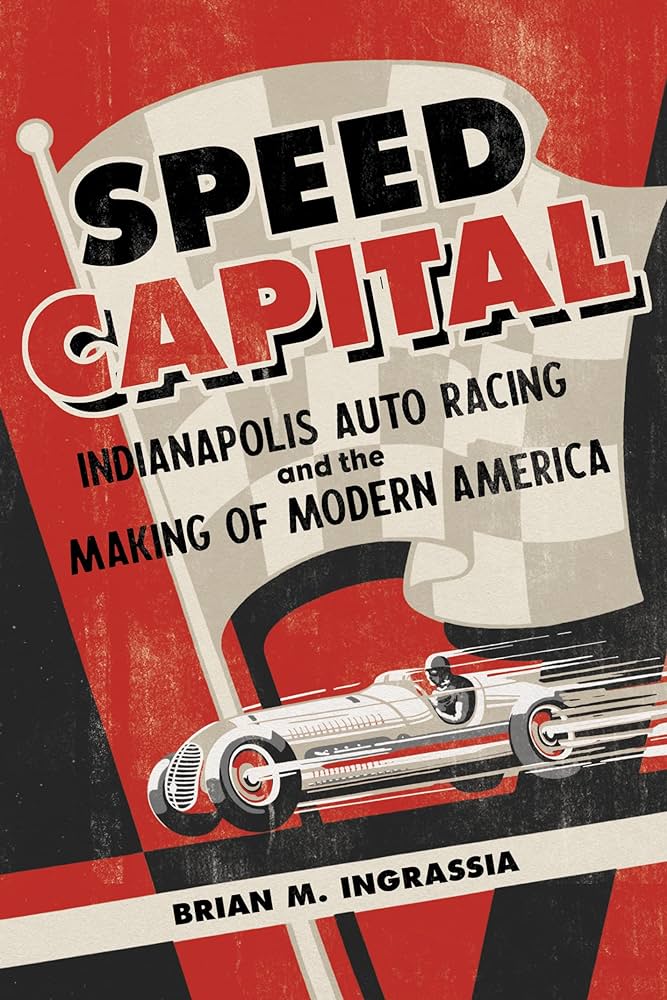

Brian M. Ingrassia is Associate Professor of History at West Texas A&M University. This interview is based on his new book, Speed Capital: Indianapolis Auto Racing and the Making of Modern America (University of Illinois Press, 2024).
JF: What led you to write Speed Capital?
BI: When I was finishing my dissertation on the history of intercollegiate football, I visited Indianapolis right at the same time I was writing a chapter about early-1900s football stadiums. I was intrigued by the enormity of the Indianapolis Motor Speedway, as well as the fact that it was located in a place called Speedway, Indiana. I wanted to know more about the history of a place organized around speed and cars, but I soon realized there was no academic history of this place, so I decided to write it myself!
JF: In 2 sentences, what is the argument of Speed Capital?
BI: Speed Capital argues that to understand the modern-day United States as a place built around automobiles, we have to understand the history of early auto racing and the way it became a central part of American culture. I argue that auto racing demonstrated what people in the early 1900s called “space annihilation”: the usage of modern transportation and communication technologies to bring people closer together and to facilitate the movement of capital.
JF: Why do we need to read Speed Capital?
BI: We need to read Speed Capital because it exposes an overlooked way that the United States came to depend on cars. Although Indianapolis and the so-called “Indy 500” are at the center of this story, this book also shows how the earliest transcontinental automotive highways were built to move people, goods, and money. A colorful figure tying these stories together is Carl Graham Fisher, a founder of the Indianapolis Motor Speedway who also became famous as a founder of Miami Beach, Florida. The book contends that Fisher may have been as important as Henry Ford, because he taught us not just how to buy cars, but how to enjoy them.
JF: Why and when did you become an American historian?
BI: I have always been curious about how the world around me got to be the way it is. I grew up the youngest member of a working-class family in central Illinois, and there were plenty of books around the house because my dad and my older brother were big history buffs. I loved history and I loved school, and so I decided to become a teacher. Once I started college, I realized that I wanted to research and write, in addition to teaching, so I went to graduate school and eventually became a professor.
JF: What is your next project?
BI: My next big project is a comprehensive history of expansion and franchise relocation in organized baseball (both major and minor leagues), stretching from the early 1900s to the present. To tell this story, the book will explore baseball’s legal history as well as the history of stadium construction. I wrote a big chunk of this book several years ago, during the pandemic, and I hope to get back to it soon.
JF: Thanks Brian!
I love this part of the blog. So helpful for comps reading. Quick obervation: it’s interesting that 3 of the recent books have been subtitled something like “the making of modern america.”
I noticed that too, Earl.